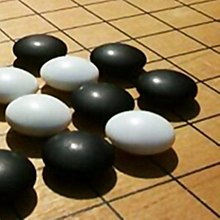| Part of a series on |
| Go |
|---|
 |
| Game specifics |
|
| History and culture |
| Players and organizations |
| Computers and mathematics |
In the history of Go in Japan, the four Go houses were four major schools of Go instituted, supported, and controlled by the state, at the beginning of the Tokugawa shogunate. (There were also many minor houses.) At roughly the same time shogi was organised into three houses. Here "house" implies an institution run on the recognised lines of the iemoto system common in all Japanese traditional arts. In particular, the house head had, in three of the four cases, a name handed down: Inoue Inseki, Yasui Senkaku, Hayashi Monnyu. References to these names, therefore, mean to the contemporary head of the house.
The four houses were the Honinbo, Hayashi, Inoue, and Yasui. They were originally designed to be on a par with each other, and competed in the official castle games called oshirogo.